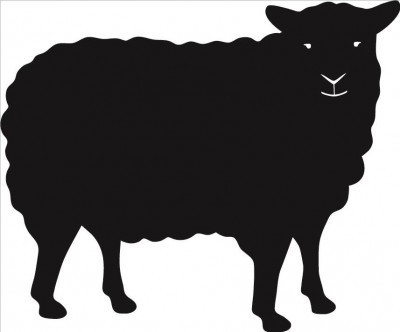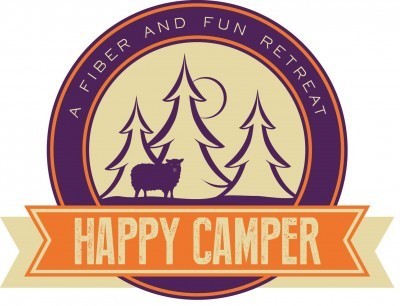Mandy Moore's Blog, page 79
July 29, 2013
Stitch Maps
I wrote about this briefly in a recent WWW post.
Tech editor and author extraordinaire JC Briar has recently launched a revolutionary new charting tool – Stitch Maps.
JC has been thinking about charts for a long time. She is the author of Charts Made Simple, an excellent little book explaining all about knitting charts, how to work from them, and how they work. Her experience writing this book, and teaching and editing, had led her to see that there is an inherent weakness in knitting charts: although they represent the stitches, they don’t necessarily represent the fabric.
Let’s take Feather and Fan for example: because of the pattern of increases and decreases, the fabric scallops. But you don’t see that in a traditional chart.
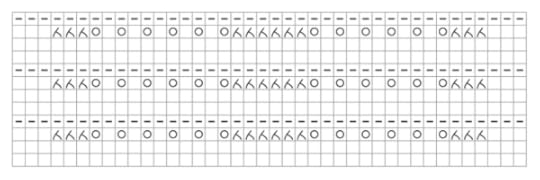
Straight chart. (Chart courtesy JC.)
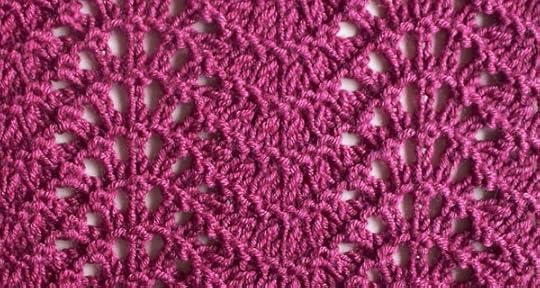
Wavy fabric. (Image courtesy JC.)
JC’s Stitch Map charts – freed of the constraints of the grid – show the flow and shape of the fabric.
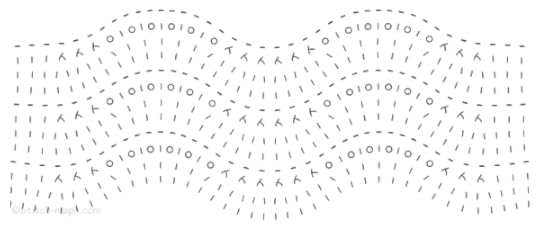
The way it really is. (Image courtesy JC.)
I had the opportunity to sit down and chat with JC about her project last month.
This new approach to knitting charts was inspired by crochet charts. Crochet charts do a much better job of representing the shape and flow of the fabric, as there are no grids. In knitting charts, rows are perfectly horizontal, whether they are in reality or not. So JC took the grids away! She said that she’d been creating charts in this gridless style on her own for some time – she used them as a design and editing tool, to check stitch patterns and fabrics.
She realized that if they were helpful to her, they were probably helpful to others, too. And so: Stitch Maps launched earlier this summer.
These new-style charts really come into their own for lace and other increased/decreased fabrics. Traditional charts continue to be a great solution for colorwork and cabled fabrics, as rows remain straight.
But for such changing fabrics, the type of visualization is immensely helpful – you can see not only how the fabric behaves, but also how the stitches interact. When working a decrease, the Stitch Maps charts show you which stitches are being worked together; and placing an increase shows you which direction the stitches shift. They allow you a better sense of what you’re working on, and also make it easier to identify where to place markers – a constant struggle for lace knitters.
The tool is available as an online application. It’s free to create and print charts; a $15 a year subscription allows you to create private charts, and gives you tools to help you work with them – the ability to place vertical or horizontal lines to help you analyze the fabric – and keep track of your work.
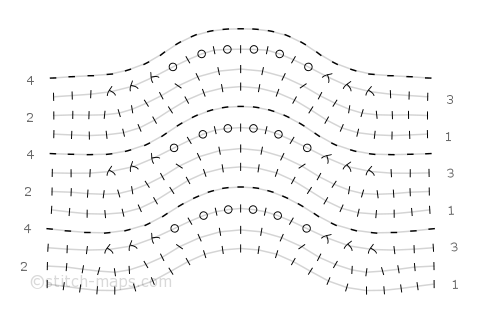
Horizontal lines indicate the rows…
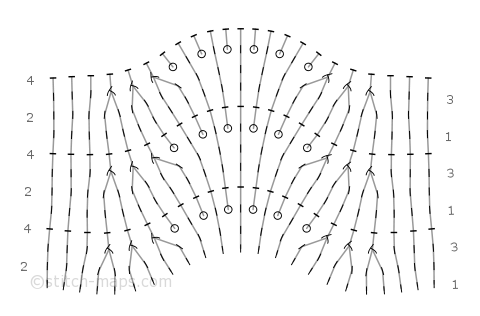
vertical lines show you how the stitches move and interact.
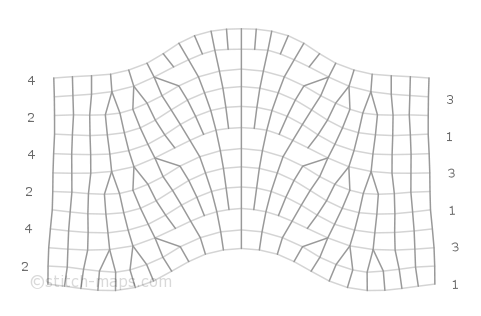
You can even remove the stitch symbols for a completely different view.
JC has developed a fantastic tool, and I’m very excited about the possibilities for its use…
A $60 subscription allows you to create publication-quality images, for designers and tech editors to include in online or print publication. More info on the subscriptions here.
What do you think? Would you like to see these charts used in patterns?

July 24, 2013
WWW: Gifts for Royal Babies, Life Lessons, Make Your Own Point Protectors
Nicely put: author Holly Robinson compares the process of writing a book to knitting.
NBC Today presenter Natalie Morales is caught knitting while waiting outside the hospital for news of the royal baby’s arrival. As we know, it’s a sensible way to pass the time. She seems to be knitting in blue… did she know something we didn’t?
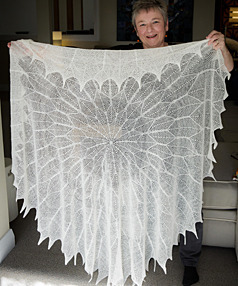
Breathtaking. A true heirloom piece.
Speaking of the new arrival, New Zealand has gifted the royal baby with a studding, one of a kind lace shawl. Designed by master lace knitter Margaret Stove , the piece was made by Cynthia Read, from our own handspun. The knitter reports it took about 280 hours to complete… This is a continuation of a lovely tradition: Ms. Stove designed and knitted a similarly incredible shawl for the birth of the baby’s father, Prince William.
If you’re a lace knitter, the work of Margaret Stove is definitely worth investigating. Although she never published the pattern for the original shawl, elements of the design are used in other works in her book “Wrapped in Lace“.
The new shawl is a version of Ms. Stove’s “Filmy Fern” pattern, featured in the same book.

All babies are special, and deserve such special blankets to welcome them.
And in related shawl news, the new prince was swaddled in a beautiful Shetland-style wool shawl to leave the hospital. It’s an original design from G. H. Hurt and Son of Nottingham, UK. All the royal babies have one of their shawls. Henry, the lead designer and owner of the company, is a fascinating man, and is doing a lot to preserve great knitting traditions. Although I think we’re all a bit sad it wasn’t a handknit shawl, it’s still wonderful to see traditional British design valued so – and we look forward to new mothers all around the world cradling their own babies in such beautiful pieces.
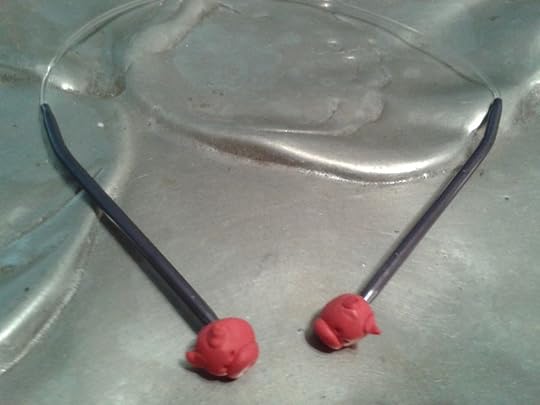
Perhaps a fun project with the kids over summer break?
Make your own adorable knitting needle point protectors with Sugru modelling clay. Tutorial at Instructables.
Following up on a story we’ve reported on before: a knitter tells the story of how her design of a hat inspired by one worn in a TV series ended with the delivery of a cease and desist letter from the 20th Century Fox Television company.
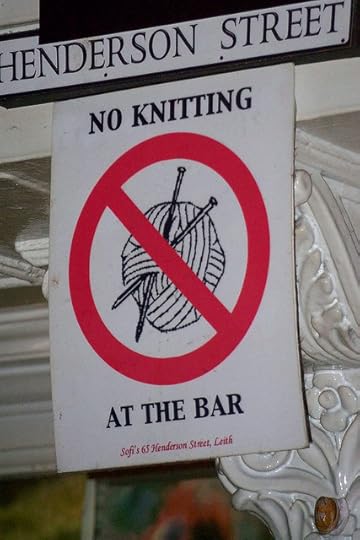
This is not a bar I would like. (Photo from Flickr via Buzzfeed – if you took it, let us know so we can credit you!)
It’s been making the rounds, but it’s worth a visit if you haven’t yet seen it: Buzzfeed’s list of 18 Important Life Lessons to be learned from Knitting. Not entirely safe for work: salty language alert!

July 23, 2013
Jillian’s Spinning: A Spinner’s Beach Read: The Field Guide to Fleece
It’s bigger than a smart phone and smaller than an e-reader, The Field Guide to Fleece by Deb Robson and Carol Ekarius is a just-the-facts-ma’am version of The Fleece and Fiber Sourcebook, and it’s coming out early!
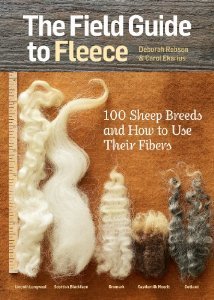
Please take me shopping!
Originally slated to come out in September, it’s now being published in early August. The Field Guide to Fleece covers 100 sheep breeds with the information needed to buy breed-specific fleeces and fibers. It’s tiny size (5″x7″) makes it perfect to tuck into a bag to take along to a fiber show or to the lake or beach for a little fibery read.
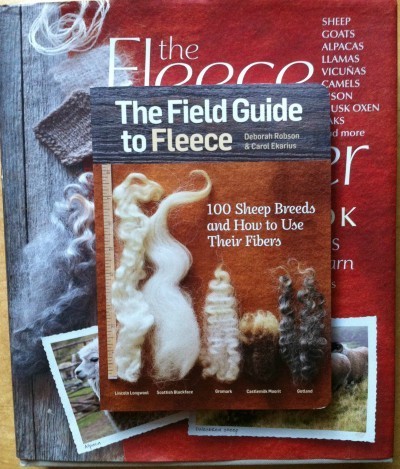
It’s wee
I have 3 copies of The Field Guide to Fleece to give away!
Regular contest rules: leave a comment on this post between now and midnight eastern time, Sunday July 26th. Three comments will be chosen at random to answer a skill testing question. If the commenter answers correctly they will win the book. If you have already won a prize from us in the past year, please do give other spinners a chance.

July 18, 2013
All about Tom Bihn, with a lot of little videos…and a contest!
When I was asked by the people at Tom Bihn (they make some of our very favorite bags ever) if I wanted to collaborate on new products, I said “Sure! Let’s Skype!”
They had a better idea. They flew me out to Seattle. I know. Rockstar treatment! I still can’t believe it happened. But I took videos, so there’s proof. Lots of it.
I had met Tom and Darcy (the head honchos of the Tom Bihn company) many years ago, when I passed through Seattle on the way to teach on the Sea Socks cruise. We’d been emailing back and forth for a while, and had collaborated on the fabulous Swift bag, which was designed by our readers and named by a really cool focus group around a table at the Dark Horse coffeeshop in Toronto. Meeting them in person was kind of like meeting bag-design royalty. I was dumbstruck.
This trip, I got over my fangirlness and we got down to work. I brought lots of products that exist but aren’t as good as what I think Tom and his crew can come up with. We looked over all the samples, played with them, explored them in combination, deconstructed, reconstructed and reimagined. There was discussion, lots of sketching, brainstorming, and at the end of the weekend, we had prototypes of our first product.
Here’s a little video of Tom with one of his expert sewers making up the first prototypes:
(These little 6-second videos are from Vine…they loop on their own. If the videos aren’t playing, click them and you’ll be able to see the goods!)
Can I show you any more than this? Well, okay. Because you asked so nicely. Here’s a shot of our prototype tool pouches:
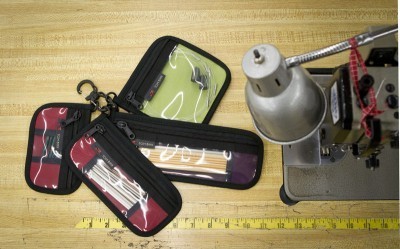
We’re not sure what to call this yet…but for now, we think of them as tool pouches. Click to see it bigger!
These are meant to store your DPNs, interchangeable needle tips and cables and even crochet hooks. They’re shown fanned out above, but normally hang tidily from that carabiner in the corner.
You’ll see there are three sizes. The smallest fits tools (including interchangeable needle tips) 4″ or shorter. The medium size fits tools 5-6″ long. And the large size fits tools 7-8″ long. This covers just about every interchangeable needle system on the market. The ends are reinforced so that the DPNs, interchangeable needle tips or crochet hooks you put in there won’t poke through the clear vinyl. And each of those reinforcements acts as a spot to hold a label, so you can make it easier to figure out what’s inside at a glance. You’d buy only the sizes of pouch you wanted, and they are kept together with a double-sided carabiner that (you won’t be surprised by this) clips into an o-ring in any of the Tom Bihn bags. Where do you keep the cables? In a square-ish pouch (it’s the wasabi-colored one above) that you clip in along with the rest of your pouches. The square-ish shape keeps the circulars from getting kinked. The backing is the same ballistic fabric used in many of Tom’s bags. It’s astoundingly strong and durable and doesn’t attract fuzz.
Don’t use interchangeable circulars? We’ll be adapting the square-ish pouch for your fixed circulars, to be produced in different sizes to accommodate the length of the needle portion. Those specs are still in development.
So, what do you think?
There were other products discussed, too. One was a new knitter’s bag that you can wear over your shoulder or across your body. Another, a case for a fiber tool. We got quite far along on the bag, but the fiber tool case is something for the future…perhaps. There are a lot of things that go into a Tom Bihn product, and unless Mr Tom himself is happy with the product, you won’t see it. That means patience is required. But it’s always worth it. The TB people tell me 2014 is the earliest we might see any of these new products, but it’s possible (if there’s enough demand) that the tool pouches could be released at the end of this year.
So what can I show you? How about these videos that I took in the showroom of some of my favorite Tom Bihn bags? Let’s do it!
Here’s the clever-as-anything Co-Pilot:
And another of my favorites, the Cafe Bag, shown here in a super-saturated Azalea pink!
// ]]>One of my favorite ah-ha moments of the weekend came when Darcy figured out we could remove the (unused by me) waist strap from my Smart Alec backpack and, using the existing straps inside the bag, turn it into a cinch for my ukulele’s neck! This keeps the uke snug against the back of the backpack, in a vertical position, and allows the zippers to snug up at the top, exposing as little of the uke as possible. And leaves tons of room in the bag for all your other stuff.
Uke players, take note: this is a fabulous one-bag carry-on solution that will get your uke past the airline staff without even a sniff of “you’re carrying two items and you’re only allowed one”. (Ask me why this is important and I’ll tell you about almost getting barred from a KLM flight because they counted my small purse, tiny uke and regulation-size rolling bag as three separate items and I was only allowed two. Grr.)
One last little video to share:
His factory is full of vintage Singer industrial sewing machines, chairs and storage units. I covet it all. No, no relation.
So what else did we do while I was there? We had an astounding, eye-opening evening at Metrix Create:Space, a really cool place full of 3D printers, laser cutters and other gear so neat, I didn’t even know what it was called. We asked Seattle knitters to come and hang with us, knit with us, and show us their Tom Bihn gear in person. And did they ever. The result? This professionally produced video, all about the Swift and how knitters use it.
Enjoy.
We’ve had a lot of contests during our 10th Anniversary year, and we’ve been saving this one for the right moment. Which is now. Ready?
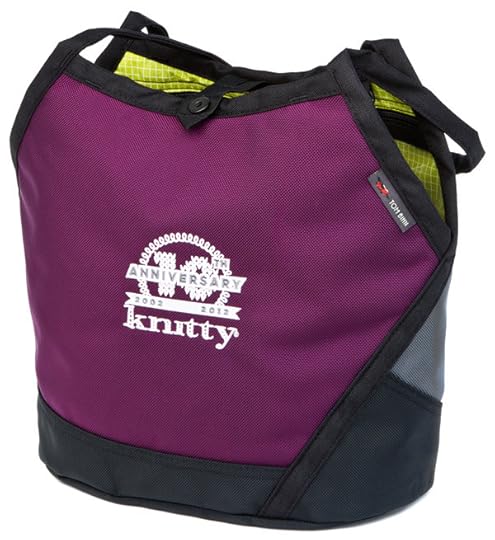
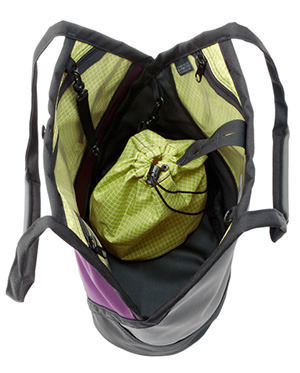
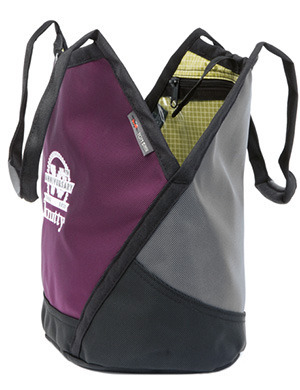
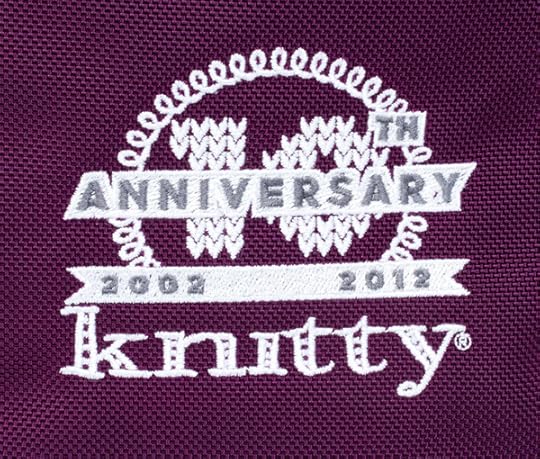
We have TWO of these last-in-the-world 10th Anniversary Knitty Swifts to give away. They were made as a limited edition last fall, and sold out by December. But we saved two for you! Each has a retail value of $100usd.
Regular contest rules: leave a comment on this post between now and midnight eastern time, Sunday, July 21st, telling us which is your favorite Tom Bihn bag (you don’t have to own it already — dream aloud!). Two comments will be chosen at random to answer a skill-testing question. If the commenter answers correctly, they will win one of the two bags. If you have already won a prize from us in the past year, please do give other knitters a chance.
Good luck!

July 17, 2013
WWW: Mohair as Punk Fashion, Choose Your Own Adventure; Fun with Fonts
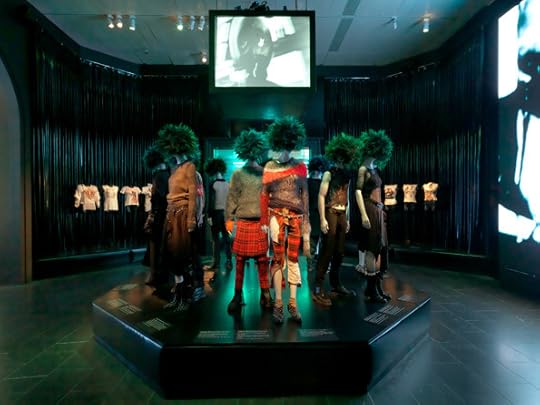
Mohair, mohair!
I recently had the chance to visit the Metropolitan Museum of New York’s current exhibit “Punk: From Chaos to Couture“. It’s a fantastic show, tracing the origins of punk fashion, and its subsequent influence on high fashion and couture. I loved the juxtaposition of the original punk outfits from the late 1970s with the ‘modern’ couture outfits they inspired.
Of particular note was the knitwear – there was lots of it shown in the exhibition.

Rodarte mohair dress, very punk and yet very modern.
Boxy mohair sweaters were common in the punk era – usually in black, white or red, often ripped or at the least by design poorly constructed or deconstructed. Designer Rodarte took this idea and developed a series of pieces using both knit and crochet techniques. Cameron Diaz is photographed wearing a dress from this collection. A mix of fibers, yarns and techniques creates a powerfully sophisticated and feminine piece, showing the fascinating circuitous paths that fashions take from inspiration to design to inspiration to design again.

Don’t you want to come along?
Designer Lee of Leethal Knits is hosting a “Choose Your Own Adventure”-style Mystery Knit Along. So much fun!
There are four choices of path – each leading to a different type of items: something for your head, a neck accessory, something to keep your hands warm, or a gift item. Each item has many different choices, and any weight or color yarn can be used. Create your own fully custom, fully unique mystery knit!
A lovely piece about KnitCamp, the annual summer knitting retreat founded by Elizabeth Zimmermann, and continued by her daughter Meg Swansen, in a Wisconsin paper.
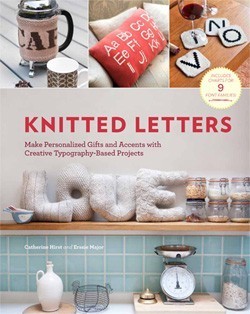
Fun!
Exciting news for font fans: the release of a new book, “Knitted Letters,” by Catherine Hirst and Erssie Major. The book has colorwork charts for 10 key font families, and a number of wonderful typography inspired patterns.
Ooh! A Kickstarter for Wooly, a project to develop a mobile app that works with Ravelry.‘

Support cyclists supporting others.
Just as she did last year, our friend Stephanie Pearl-McPhee, the Yarnharlot, is doing a 650km (over 400 mile) bike ride to raise funds to support Canadians living with HIV and AIDS. She and her teammates – including awesome knitter and all around good egg Jen H. – can be sponsored. Links on this page.
July 16, 2013
Jillian’s Spinning: Happy Camper Fiber Retreat
On the weekend of September 20th I will be hosting The Happy Camper Fiber Retreat along with two spectacular teachers, Beth Smith and Rita Petteys.
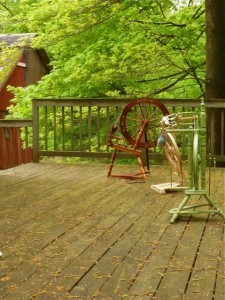
Spinning on the deck
From Friday evening until Sunday afternoon we will be immersed in dyeing and spinning with a focus on color. Our goal for this retreat is for each spinner to leave with a more comfortable relationship with color. After taking all three classes you’ll have the tools to create and manipulate your own color paths through dyeing, carding and spinning. There will be three classes and each camper will rotate through all of them:
Dyeing Harmonious Color Combinations on Spinning Fiber
Color Play: Stress-free Ways to Spin with Color – Variegated Tops and Rovings.
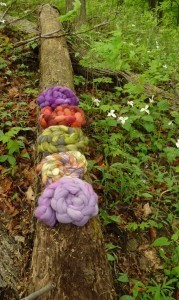
Lots of color!
We’ll dye, card and spin in class during the day and make s’more around a campfire at night (plus more spinning and silliness). We’re limiting the retreat to 30 spinners, so each class of 10 will be intimate with lots of time to get individual instruction.
All of this fun will take place in western Michigan at the Ronora Lodge, a retreat center on 350 acres of beautiful wilderness.

Fall in western Michigan
We are so excited about this retreat and hope you will join us for spinning and silliness in the woods. The cost of the retreat includes lodging, food and all materials. Of course we’ll have a great fibery goodie bag and there will be a chance to shop at the Camp Store on Saturday night.
Will anyone’s underwear find their way to the top of the flagpole at this camp? I can’t answer that. But I do know I wrote a goofy song for this year. It’s sung to the tune of Little Cabin in the Woods:
In a cabin, in a wood
Happy spinners by the window stood
Had some sheep stop on by, knocking at the door,
“Spin us, dye us, girls” ,they said, “pounds to go before you bed”
“Come little sheep, come be mine, we’ll even pour you a glass of wine”
We need to make our final commitment to the camp this week. We need to know if you are coming by this coming Friday, the 19th. If you sign up by Friday you’ll be entered into a giant prize drawing. The drawing is for $300 worth of spinning prizes. If you’ve already registered for the retreat you are already entered.
Here’s the list:
$100 worth of Yarn Hollow dyed fiber in fantastic colors. (She has more than is showing but she sells it so fast the website can’t keep up)
A Super Fiber Sampler from the Spinning Loft and the book In Sheeps Clothing.
And finally a copy of the Fleece and Fiber Sourcebook along with the new book by Sarah Anderson The Spinner’s Book of Yarn Design.

July 11, 2013
What to Knit When It’s Hot? A knitbot Linen Giveaway!
Hannah Fettig has released a collection of 6 gorgeous unconstructed patterns knit out of Quince & Co. linen yarn, Sparrow.
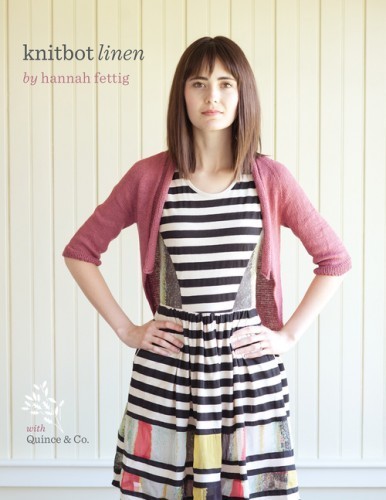
There is nothing like knitting with linen when it’s too hot for wool. Quince & Co Sparrow is divine, smooth and crisp to knit with, then it gets buttery soft the more you wear it.
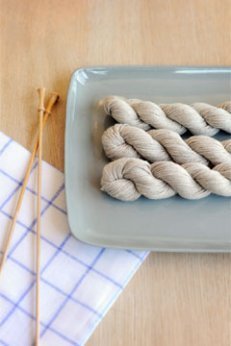
Hannah’s patterns in linen are fluttery and full of swing. Just looking at them just makes me feel cooler.
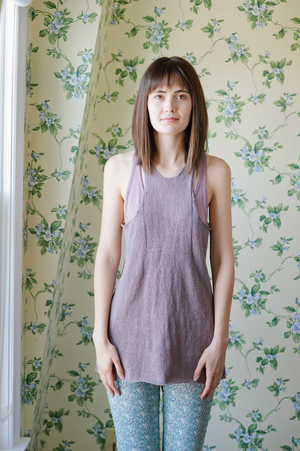
Beautiful pink tank

Swingy blue cardi
Just for KnittyBlog readers Hannah is offering 25% off Knitbot patterns, good thru end of day Friday EST. Just use the coupon code KNITTY.
I have one signed copy of knitbot Linen to give away.
Regular contest rules: leave a comment on this post between now and midnight eastern time, Sunday July 14th. One comment will be chosen at random to answer a skill testing question. If the commenter answers correctly they will win the signed book. If you have already won a prize from us in the past year, please do give other knitters a chance.

July 10, 2013
WWW: Great London Yarn Crawl; Bunting!, Pugs in rugs?
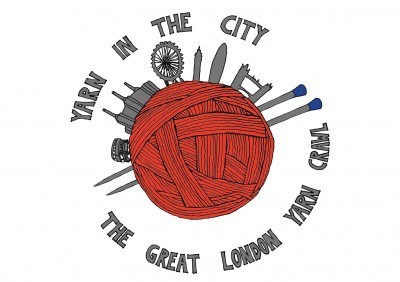
Now that looks like a fun day!
Friend of Knitty, Allison Thistlewood, recently relocated to London, has paired up with knit designer and spinner Rachel Brown, to establish the Great London Yarn Crawl.
Yarn in the City: The Great London Yarn Crawl is a one-day yarn extravaganza that will see six groups of intrepid yarn hunters take to the streets (and buses and trains and tubes) of London on a whirlwind tour of local yarn and haberdashery stores. Rounding out the day is an after-party at a Waterloo pub where fibre enthusiasts can compare their yarn-y purchases and rest weary feet while enjoying a pint or two with their knitting. Proceeds from the event are being donated to Refuge.
Participating shops include Loop, Nest, The Village Haberdashery, Sharp Works, Prick Your Finger, Knit With Attitude, Handweavers Studio, and I Knit London. Tickets – providing access to the event, special discounts, entry for contests and prizes and a travelcard – go on sale July 10th, 7pm London time, at the website.
Alli, from Toronto, credits the TTC Knitalong for inspiration for the idea.
Following up on a story from last week, 3.3km of knitted bunting has been hung around the Search Press warehouse. Fantastic photos courtesy Ruth of Rock and Purl. We will report back when Guinness officially responds about the record-breaking attempt.
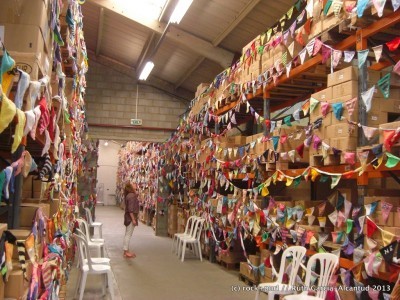
That has to be a good miles’ worth there…
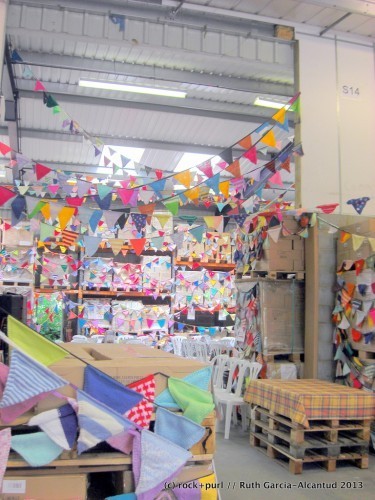
Most festive warehouse ever?
Brooklyn yarn and fabric shop, The Brooklyn General Store, is hosting a “Make Your Own Chicken” contest. Yes, you read that right.
The store is installing a chicken coop in their front window, and they’re asking crafters to help fill it. The best chickens are eligible for prizes.
It’s not just for knitters: consulting the rules, I learn that any feathered fowl that can lay eggs will count as a chicken. The rules are: the chickens must be 3-D; handmade from natural materials; no bigger than 15 inches… Although they are clear on one thing: NO TAXIDERMY PLEASE!
Only in Brooklyn.
I can’t wait to see the results of this.
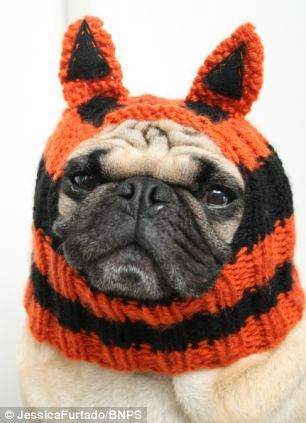
You can’t not laugh! Poor creature.
A student in the UK is trying hard to start a new fashion for hand-knit headwear for dogs. I don’t know whether it will ever catch on, but I did very much enjoy the photographs. (Note: Daily Mail link.)
Also fun to look at: on Buzzfeed, “23 Weird but awesome knitted things”.
New Jersey artist Megan Gilhool founded the ‘Sea Bright Knitting Club’ to help her friends cope with the destruction left by Hurricane Sandy Knitters young and old are benefiting from the companionship and the satisfaction of the craft.
By the Power of the Ampersand! Knitty technical editor Ashley Knowlton, and a fellow lover of MS Excel, shares a GENIUS TIP for designers who are using the spreadsheet software to help them write their patterns.

July 8, 2013
Modification Mondays
Knit designer Julie Crawford, in addition to publishing many beautiful designs, writes a blog. All her posts are worth reading, but in particular we get most excited on Monday mornings – Modification Mondays.
Just about every Monday, Julie blogs about a pattern modification or conversion. She finds fantastic projects inspired by existing patterns, and writes about them.
A recent post featured a conversion of the popular Knitty summer top pattern, Gemini,
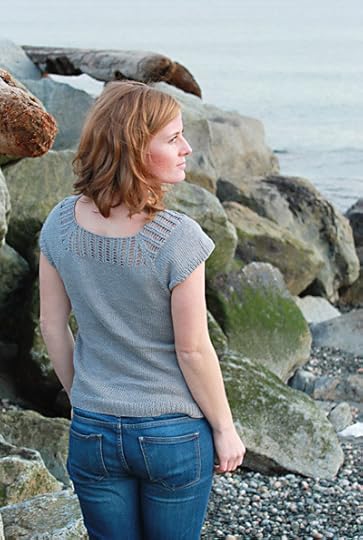
The original
into a summer dress!

The new version.
And remember the classic Urchin tam?
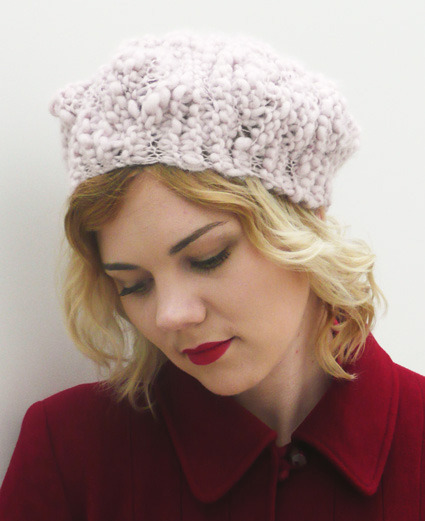
Perfect, and yet…
How about a lacy rainbow version!
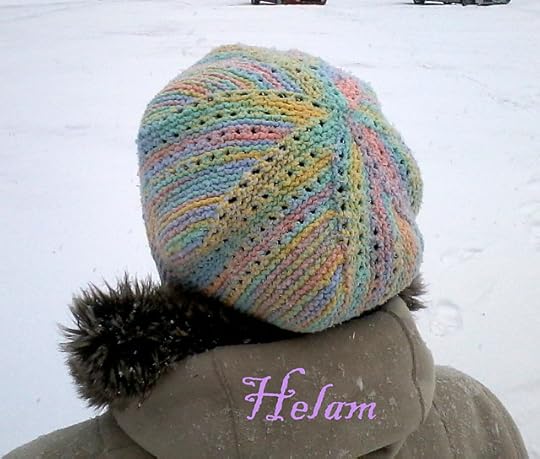
Totally wonderful, both the same and very different.
And I adore the BFF hat, inspired by the cowl.
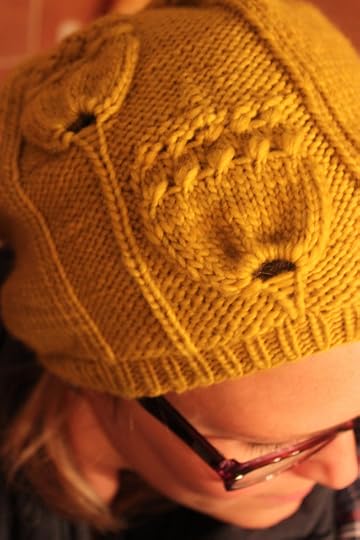
So very good.
She features many Knitty projects, but there are projects from all sorts of sources. Some of the modifications are truly mind-boggling: this is a lace scarf, turned into one of the most beautiful sweaters I have ever seen. It has to be seen to be believed.
Julie provides information on the details of the modification, always providing info on the original pattern, and the new version. The knitters are most often very generous, posting their pattern notes on Ravelry, too.
I chatted with Julie about the blog series. She credits Teresa of Canary Knits for inspiring the series…
”Teresa has had a great feature on her blog featuring Indie Designers. With the advent of Ravelry, suddenly it was easy to find really creative modifications to knits that I really loved. Since blogging is all about sharing, it made sense to share my finds with the knitting community. Sometimes people email me links for great modifications, which I love- it’s impossible for one person to stay on top of all the great projects on Ravelry. When I go looking, I have a strategy- people are more likely to modify a free pattern than a pattern they’ve paid for, so I focus on free patterns that have been live for about 6 months or so, which means there are likely a lot of FOs and an inspiring mod or two.”
One of Julie’s favourite modification is this version of the Laminaria shawl.
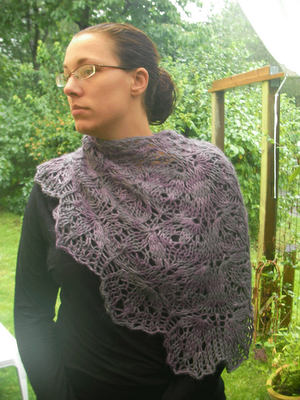
A simple but utterly unexpected reimagining.
It was made in 2009, and at the time, lace was always worked with fine yarn and fine needles; the knitter’s decision to use bulky weight yarn and giant needles seemed positively revolutionary, and the results were stunning.
She also mentions this grown-up-ization of baby cardigan Trellis.
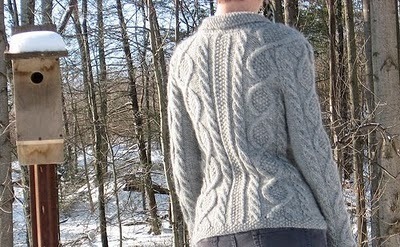
Perfect.
In Julie’s words: “It’s not easy to upsize on that dramatic of a scale, or to have a kid sweater look appropriate for an adult without being twee, but the result is amazing.” I agree!
Join me on Mondays at Julie’s blog, won’t you?

July 3, 2013
WWW: Knitting World Records, Prepping for Baby, Stories in Stitches
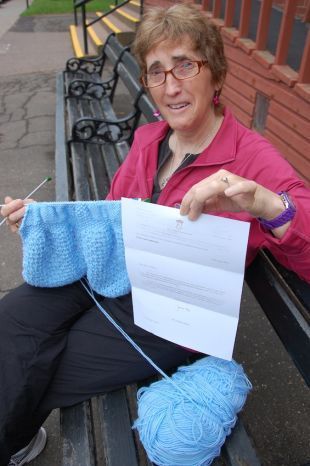
Vicki is generous and thoughtful knitter!
Because babies are the best reason to knit: Vicki Weldin, a knitter from Charlottetown, Prince Edward Island, made a baby set for the upcoming royal baby. She sent the blanket, matinee jacket, booties and mittens to Prince William and the Duchess of Cambridge c/o Buckingham Palace, and received a personal thank you in return.
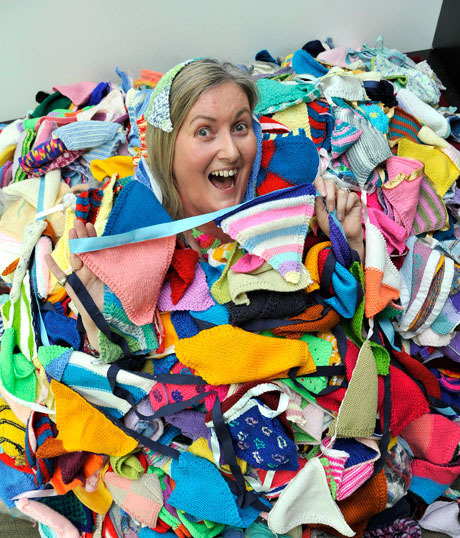
Love it!
The magazine Women’s Weekly in the UK, has launched an initiative to break the world record for the longest knitted bunting. 926 knitters have contributed to the effort, and there is 3.2km (2 miles) worth of the decorative flag. To qualify for the record, however, the bunting must be hung, and so on July 8th in Tunbridge Wells, the bunting will be displayed in the arts and crafts warehouse of publisher Search Press. The public are invited – there will be refreshments, and an opportunity to look at the books.
On a related note, I’m tickled by this listing, from the UK Handknitting Association, of all the current knitting-related world records, or record-breaking attempts.
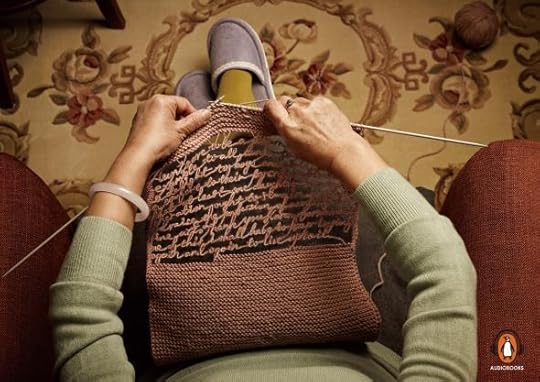
Truth.
Also love this: an ad for Penguin Audiobooks, created by the China branch of ad agency Y&R.
AmaWaterways has announced a new seven-night knitting-themed European river cruise. The cruise embarks Vilshofen on December 27th 2014, onboard the 161-passenger vessel AmaBella. Knitting and textile expert Barry Klein will offer classes on stitch patterns and knitting techniques, forums on trends in yarn and fashion.

Preserving knitting history and heritage.
Knitty columnist Donna Druchunas has recently launched a digital magazine, Stories in Stitches, which focuses on historical patterns and techniques. As part of launch, Donna has launched a “share your story” contest – she’s seeking your knitting stories… who taught you, what your first project was, your most important knitting lesson. Enter to win prizes! Even if you don’t have a story to share, it’s worth a visit to read others’.

Mandy Moore's Blog
- Mandy Moore's profile
- 6 followers


